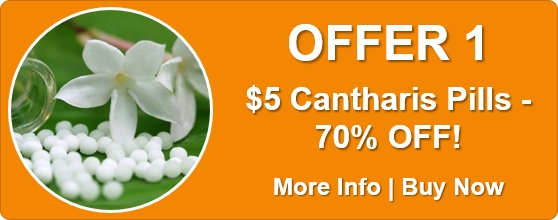Know Your Remedies: Causticum (Caust.)
 Common Names: Blended slaked lime and sulphate of potash.
Common Names: Blended slaked lime and sulphate of potash.
General Information
Causticum is a remedy for acute and minor complaints that include burning sensations, and types of hoarseness. loss of voice, coughs, and warts. Chronic complaints that also respond to Causticum usually involve gradual paralysis, types of neurological disorders, and hardening or stiffening of the tendons. Right-sided Bell’s Palsy often responds to Causticum. Complaints worsen in cold, dry weather but improve when cold and damp. Those needing this remedy tend to be sensitive and empathetic with a strong sense of justice. Mental-emotional Symptoms
- Feel things deeply, even the suffering of others.
- Idealistic and intolerant of injustice or rebel against authority.
- Feel as though “something bad is about to happen”.
- Feel as if they have “forgotten something”.
- Stammering when excited.
Skin Complaints
- Warts on eyelids, eyebrows, nose, or around fingernails.
- Eruptions on the tip of the nose.
- Burning sensations on the surface of the skin.
Joints and Muscles
- Contraction, stiffening and hardening of tendons.
- Types of Dupuytren and carpel tunnel syndrome.
- Rheumatic pain in the small joints such as those of the fingers.
Throat Complaints
- Constant clearing of the throat.
- Hoarseness from overuse of the voice.
Cough
- Cannot cough deep enough to reach the mucus.
- Coughing relieved by cold drinks.
Nervous System
- Paralysis, especially right-sided.
- Tics, jerks, restlessness, chorea.
- Nerve-related pain, especially after exposure to cold, dry wind.
- Unable to pass urine from bladder paralysis. Loss of urine with cough.
Where do I find it?
Causticum (Caust.) is available from our online store as a single remedy, and as part of the following Complexes (combination remedies): Burns; Hoarseness & Aphonia; Restless Legs; Sunburn;.
Home Treatment Guidelines
Acute, Self-Limiting Conditions
Conditions like colds or minor injuries, which are short-term and typically improve on their own, can be managed at home with homeopathy. However, in emergencies or if symptoms worsen, contact your healthcare provider.
Chronic Conditions
These home treatment instructions do not apply for ongoing issues, whether mentioned above or not, like persistent allergies or chronic pain. You should consult a qualified homeopath for a personalized treatment plan to achieve the best results with homeopathy for chronic conditions.
How to Take the Remedy for Acute Conditions
- Take one pill or five drops of the remedy. The frequency depends on symptom severity. As examples:
- For life-threatening symptoms, take every 1 minute and seek emergency help immediately.
- For mild symptoms, take every 4 hours.
- Stop taking the remedy once you feel better. Resume if symptoms return.
- If no improvement after four doses, choose a different remedy or consult a professional homeopath.
- For more details on dosing, refer to: How Often to Dose with a 30C Homeopathic remedy.
- For information on the different potencies, read: Guidelines on which potency to use
Additional Notes From Past Masters
Homeopathy is a 200-year-old system of medicine. Early homeopaths recorded detailed notes on how remedies worked, including initial tests, remedy relationships, and their experiences. These writings were shared to improve homeopathic practice and now offer fascinating insights into past uses of homeopathy. Here’s an example, edited and modernised for clarity, from Leaders In Homoeopathic Therapeutics (1898) by E. B. NASH M.D.:
Leaders In Homoeopathic Therapeutics by E. B. NASH M.D.
Causticum (Caust.)
Great weakness, faint-like goneness culminating in local paralysis (vocal organs, tongue, muscles of deglutition, eyelids, face, bladder and extremities).
Obstinate neuralgias, especially of psoric origin; pains of a cramping, drawing nature.
Sensation of sore rawness (Scalp, throat, larynx and trachea, chest, rectum, anus, urethra and eruptions with burning).
Contractions of the ligaments (arthritis deformans).
Dry cough with pain in hip and involuntary urination. Soreness and rawness in air passages, cannot raise the mucus, < on expiration, > swallowing cold water.
Haemorrhoids sore and raw < on walking. Constipation frequent, ineffectual desire for stool; passes better on standing.
Modalities: < dry weather, walking (piles), > wet weather, swallowing cold water (cough).
* * * * *
This is a very unique remedy, proven by Hahnemann and classed among the anti-psorics. Its exact chemical composition is not known but it is supposed to be a kind of potash preparation.
It has quite a long list of peculiar symptoms, which are, nevertheless, very reliable.
In the first place it has great weakness, such as characterizes the potash salts generally. It is with Causticum “faint-like weakness, or sinking of strength, with trembling.” In this it resembles Gelsemium, and it has another symptom, in connection with its general weakness which resembles Gelsemium, viz.: “Drooping of the lids.” Sepia, Causticum and Gelsemium is the trio having this peculiar symptom in a very marked degree.
Now, the weakness of Causticum progresses until we have “gradually appearing paralysis,” indeed, paralysis is common with Causticum and attacks in a general way the right side (Lachesis the left), but it also has local paralysis; as, for instance, of the vocal organs, muscles of deglutition, of tongue, eyelids, face, bladder and extremities.
On the other hand, it has all grades of nervous twitchings, chorea, convulsions and epileptic attacks, even progressive locomotor ataxia. I can only name these diseases here, but will notice further on the symptoms and conditions which appear in connection with them.
Neuralgic affections are also common with this remedy and are generally of an obstinate character. Causticum has helped me out in such cases when other seemingly indicated remedies failed. One of our oldest and most eminent writers on Materia Medica, Charles J. Hempel, sneered at the multiplicity of symptoms of this remedy, as found in the “Chronic Diseases,” but the clinical test has proven it to be a remedy of great use and wide range.
On the mind it exerts a very depressing influence in keeping with its general action on the nervous system. Melancholy mood; sadness, hopelessness; is apt to look on the dark side of everything. This melancholy may come from care, grief or sorrow. It often comes from long lasting grief or sorrow, and should be remembered here alongside Ignatia, Natrum muriaticum and Phosphoric acid.
This is the preponderant mood of Causticum, but it may alternate with an anxious, irritable or hysterical mood. We have already spoken of the paralysis of the eyelids. The vision is often affected; there is an appearance of gauze before the eyes, or as if a fog or cloud were there. This is often the case in incipient cataract, and Causticum often remedies it.
Upon the ears there is roaring, tinkling, humming and all sorts of noises. It is one of our best remedies in deafness with these noises. Reverberation of sounds, especially the patient’s own voice, finds here a remedy.
Then the ears (external) burn and are very red. Sulphur also has this symptom very prominently: and right here we may say that there are many resemblances between these two remedies, and they follow each other well, especially in chronic diseases.
Upon the face we have four prominent peculiar symptoms:
1st. Yellowness of the face; sickly yellow (not jaundice).
2d. Paralysis of a rheumatic or psoric origin.
3d. Prosopalgia of the same origin.
4th. Stiffness of the jaws; could not open the mouth.
This latter symptom also seems to be rheumatic and is in keeping with the arthritis deformans, of which we will say more further on.
Upon the tongue we have: 1st. Paralisis; or indistinct speech without complete paralysis (Gels.). 2d. Tongue coated white on the sides, red in the middle, but not so sharply defined as in Veratrum viride.
The throat comes strongly under the influence of Causticum.
“Burning pain in throat, not < by swallowing; pain is in both sides or seems to arise from chest.”
“Rawness and tickling in throat with dry cough and some expectoration after long coughing.”
This again in similar to Sulphur, which has burning in throat, more on right side. I have found that if Sulphur did not relieve, Causticum given after it, often would.
Intestinal Canal. -Sensation of lime being burned in the stomach, with rising of air. Guernsey praised this symptom and considered it reliable.
I have not verified if Causticum is one of our best remedies in anal troubles, and has very peculiar symptoms. “Constipation, frequent but unsuccessful desire to stool.” (Nux.) “Frequent ineffectual desire to stool, with much pain and straining, with redness of face.” “The stool passes better when standing. Haemorrhoids impeding stool, swollen; itching: smarting; rawness; moist; stinging; burning; raw and sore, aggravated when walking, when thinking of them, from preaching or straining the voice.” All these symptoms have been verified over and over again.
There are other symptoms also in this region that are very valuable, but we are not writing a complete Materia Medica and will only say in addition that in all anal troubles we should let Causticum rank among the first in our mind when we are hunting for the simillimum. We do not know in what part the peculiar and characteristic symptom which leads to the simillimum will appear, but must be on the alert to recognize it promptly.
Causticum also has very marked action upon the urinary organs, as is shown by the following symptoms: “Itching of the orifice of the urethra.” “Constant ineffectual desire to urinate, frequent evacuations of only a few drops, with spasms in the rectum and constipation.”
This is like Nux vomica and Cantharis, and I once cured a chronic case of cystitis in a married woman, which had baffled the best efforts of several old school physicians, eminent for their skill for years. There was another symptom in the case that was prominent, and that was a sensation of soreness or rawness. More will be said, when we come to write on sensations, of this last symptom. Again, “retention of urine, with frequent and urgent desire, occasionally a few drops dribble away.”
“Involuntary passage of urine when coughing, sneezing, blowing the nose; at night when asleep; when walking.” “He urinates so easily that he is not sensible of the stream, and scarcely believes in the dark that he is urinating at all, until he makes sure by sense of touch.” I do not know of any remedy in which this weakness of the neck of the bladder is more prominent. Causticum also affects the urine itself “The urine is loaded with lithic acid and lithates (Hughes), there are thick deposits or sediments of various colors from dark to light” These are a few of the leading urinary symptoms and show its importance here.
Respiratory Organs. -Hoarseness worse in the morning, with rawness and sudden loss of voice. Laryngeal muscles refuse to act; cannot speak a loud word. Chronic hoarseness remaining after acute laryngitis. Hoarseness with deep bass voice (like Drosera). These are all very reliable symptoms, and no remedy removes them oftener than Causticum. All this loss of voice may come from paresis of the vocal chords, or from catarrhal causes.
Then following down the respiratory tract, we have great rawness and irritation of the trachea, cough dry, hollow; with sore or raw sensation in a streak down along the trachea. Cough with pain in hip and involuntary urination. Cough with sensation as if she could not cough deep enough to start the mucus. Coughs worse on expiration (Acon.) Cough relieved by a swallow of cold water. Cough with inability to raise the mucus, it must be swallowed; but the most characteristic symptom all through the cough and chest symptoms is the sensation of soreness and rawness accompanying them. Some will express this as a sensation of burning, if so we must remember Iodine and Spongia.
In influenza or what is now called La Grippe it disputes for first place with Eupatorium perf. and Rhus toxicod. All three have a tired, sore, bruised sensation all over the body, and all have soreness in the chest when coughing, but if involuntary micturition is present Causticum wins. No homeoopath can afford to be without an understanding of Causticum upon the respiratory organs.
Now upon the back and extremities we have -stiffness and pain in neck and throat, muscles feel as if bound, could scarce move the head. Painful stiffness of the back and sacrum, especially on rising from a chair. Paralysis of either or both lower and upper extremities. Dull drawing pain in hands and arms. Drawing and tearing in thighs and legs, knees and feet, worse in open air and better in bed. Weakness and trembling of the limbs. Rheumatic and arthritic inflammations with contractions of the flexors and stiffness of the joints. All these, and many more symptoms, show what a useful remedy this must be in its general action on the back and extremities, but right here I wish to say that if I were to select the three remedies to the exclusion of all others for the treatment of chronic rheumatism and paralysis Causticum, Rhus tox. and Sulphur would be the three. These three remedies studied in their correspondence and relation to each other will more than repay the careful student, and Causticum holds well its own in the comparison.
You will remember that I have before alluded to the resemblances of Causticum and Sulphur, and may continue to do so further on. I wish here, although constitutionally opposed to making too much of complementaries and incompatibles (so-called), to state that there are no two remedies that are oftener indicated after each other, and work as well when so indicated, than these two. If Hahnemann had never given to the homeopathic school any remedy but Causticum, the world would still be to him under lasting obligations.
Sensations. -Tearing pains are, characteristic of this remedy. They are often paroxysmal. This is often found in neuralgia of the face.
Then again I wish to call particular attention to the sensation of soreness or rawness. This is found in scalp, throat, larynx and trachea, chest, rectum, anus, urethra and eruptions. We observe that the sensation of soreness is not like that of Arnica, which is a soreness as if bruised and mostly muscular, nor of Rhus toxicodendron, which is an aching soreness as if sprained and oftenest found in the tendons and sheaths of muscles, or areolar tissues; but it is a soreness mostly, if not altogether, of mucous surfaces as if the parts were raw. This is important and a very reliable sensation.
Then again we have in Causticum much burning. These burnings are found almost everywhere, and in this we again see its resemblance to Sulphur. Now let it be remembered that the burnings of Sulphur are associated with itching, those of Apis mellifica with stinging, and those of Causticum with soreness. So we must always learn to differentiate, because it is only by so doing that we can select the one remedy out of a class, and sometimes a large class, having the same or similar symptoms.
The drawing pains that in many cases result in forcing out of shape the extremities so as to cause that terrible affliction known as arthritis deformans are found as prominently under Causticum as under any other remedy, and it is one of the most useful agents for the relief or cure.
Causticum is classed among Hahnemann’s anti-psorics. It is certainly one of the prominent remedies for affections arising from the suppression of itch or chronic skin troubles, like eczema. I was once called, in consultation, to a case of prosopalgia which had for a long time baffled the skill of a very good homśopathic practitioner. Not being able to relieve the case, he had become demoralized, and as the pain and suffering were very great he had resorted to anodynes, but with the usual result of making the patient worse, after the anodynes had worn out, than she was before.
On looking over the case carefully, I found in addition to the emaciated and greatly debilitated condition of the patient, after so long suffering, that the pains came in paroxysms, that they were of a drawing nature, and that she had suffered from eczema for years, at different times, before this pain appeared. Sulphur had been given, but without relief. So I advised Causticum. It was given, in the 200th, and a rapid and a permanent cure was the result.
Whether Causticum could be called an anti-sycotic as well as anti-psoric, or not, I do not know. Certain it is that it is one of our most successful remedies for warts. It stands next to Thuja, if not equal. It is also foremost in old sores originating in burns.
I have given more space to Causticum than I otherwise would, for the reason that I am sure that this great remedy is not generally appreciated. I know of no remedy more positive and satisfactory in its action when indicated. Generally < in clear fine weather > in damp wet weather. (Nux vom., asthma < in dry weather > in damp weather.).







